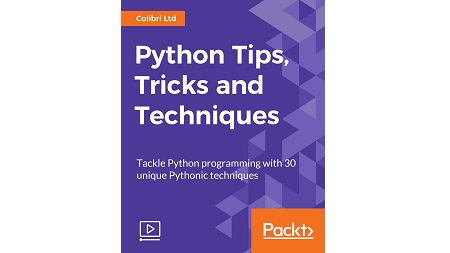
English | MP4 | AVC 1280×720 | AAC 44KHz 2ch | 2h 38m | 338 MB
From first-class functions to abstract base classes, apply Pythonic tricks to your application and be a Python rockstar
You have been programming in Python for a while now. You know that Python is easy to get started with, but hard to get right. You want to write Pythonic code to make an impact in both the open source arena and your career.
This course is will take you from a Python outsider to an insider. You will benefit from insights from the Python documentation, PEPs, and online developer communities to learn the ultimate Pythonic ways to tackle common programming patterns. This course covers tips, tricks, and techniques for loops, data structures, object-oriented programming, functions, and more, helping you work on ordered collections and key-value stores for dictionaries. You will be able to increase the speed and performance of your code while making it easier to debug. Start writing cleaner code for your applications and learn to organize it better in just 3 hours.
No other course can transform every corner of your Python code. Take this course NOW and become an overnight Python rockstar developer.
The course is full of hands-on instructions, interesting and illustrative visualizations, and clear explanations. It is packed full of useful tips and relevant advice which can be applied to real, commercial products. Throughout the course, we maintain a focus on practicality and getting things done, not fancy programming concepts and theory.
What You Will Learn
- Master lists and list comprehension to write less clunky for loops.
- Learn to use dictionaries in a smarter way to keep track of your application’s state.
- Save time writing custom subclasses by learning new data structures built right into Python.
- Use functional programming concepts in Python to make your code more compact
- Smartly organize your code and make it more readable with OOP
- Evolve into a seasoned Python developer with top Pythonic tips
Table of Contents
Working on Ordered Collections with Lists and List Comprehension
1 The Course Overview
2 Using List Comprehensions to Shorten for Loops
3 Inserting if Statements Using Conditional List Comprehensions
4 Operating on Lists of Lists with Nested List Comprehensions
5 Simplify Your Collapsing Nested Lists
6 List Slicing Tricks
Creating Simple Key-value Stores with Python Dictionaries
7 Never Get a KeyError Again with the defaultdict Data Structure
8 Collapsing Nested Dictionaries to Simplify Your Code
9 Mini Switch-case Statements with Dictionaries
10 Merging Two Dictionaries with Just One line of Code
11 Creating a Dictionary with List Comprehension in Python
Speed Up Your Code with High Performance Container Datatypes
12 Counting Occurrences of Items Quickly with Counter
13 Creating Stacks or Queues with Deque Objects
14 Grouping Related Values with Tuples and Sequences
15 Gathering Unique Sets of Values with Sets and Frozensets
16 Powering Up Your Dictionaries with Ordered Dictionaries
Making Your Code Easier to Debug With Functional Programming
17 New Ways Of Calling Functions with Arguments and kwargs
18 One Line Functions with Lambdas
19 Segmenting Your Code with Functions within Functions
20 Creating Dynamic Functions by Returning Functions
21 Power Up Your Functions by Wrapping Them With Decorators
Organizing Your Code Better with OOP and Classes
22 Copying and Cloning Objects the Right Way
23 Mini-classes of Python – namedtuples
24 Creating Smart Values with Static Methods and Properties
25 Comparing Two Different Objects
26 Do Real OOP by Implementing Abstract Base Classes in Python
Creating Safer and Cleaner Applications with Pythonic Patterns
27 Enumerating the Indices of Your Loops with No Extra Lines
28 Underscore Useless Variables to Make Your Code Easier to Look at
29 Uncommon “for..else” Loop to End Your Iteration
30 Pretty Printing Any Python Data Structure
31 Managing Your Dynamic Resources Carefully with Context Managers
Resolve the captcha to access the links!